The agricultural and fishing industry of the Tohoku region was devastated by the giant earthquake of March 2011, but joining forces post-disaster, a robust network of producers is successfully promoting the appeal and safety of the region’s food to consumers in Japan and abroad.
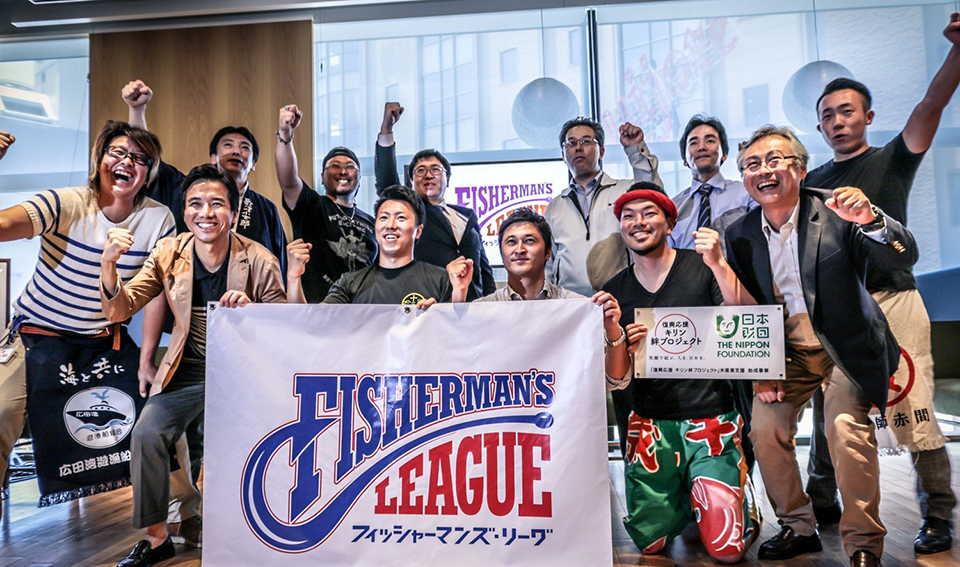
Fisherman’s League, which was formed in 2016, is a group of fishing-industry leaders who came up with the inspired idea to create fishery brands that would be popular around the world. Heroes like these are helping to win back of trust of consumers.
Tohoku—the northeastern part of Honshu, Japan’s largest island—is a region abundantly blessed by nature and has long been a stronghold of the agricultural and fishing industries. Farmlands and fisheries were devastated by the Great East Japan Earthquake and subsequent tsunami of 2011, and the hardship was prolonged by reputational damage caused by nuclear accident at the Fukushima Daiichi Nuclear Power Station (NPS). But the region has gradually recovered, with agricultural production already surpassing pre-disaster levels in the prefectures of Miyagi and Iwate.
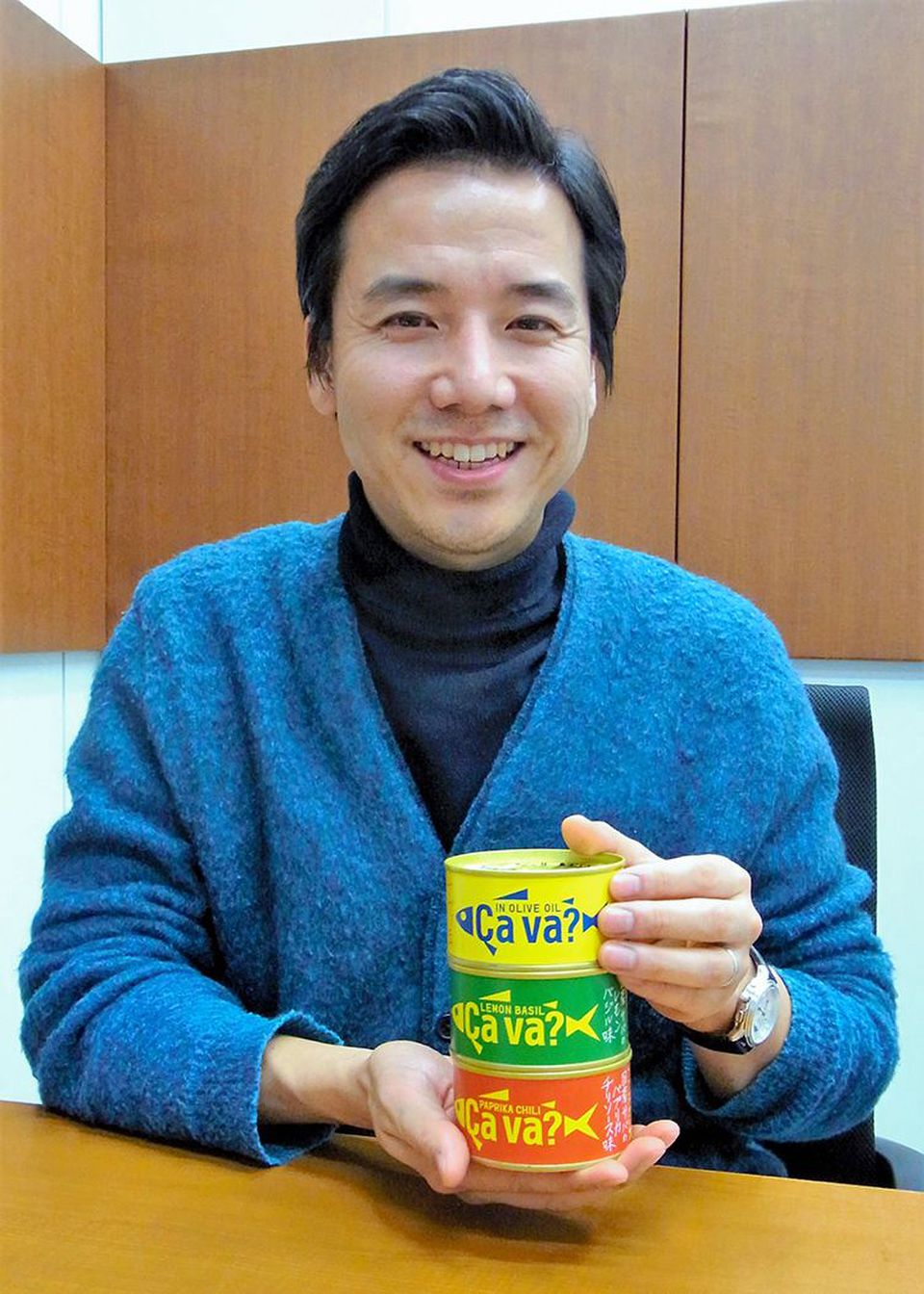
Takahashi carefully considered the naming and product design for “Ça va?”—canned mackerel from Iwate that became a hit item.
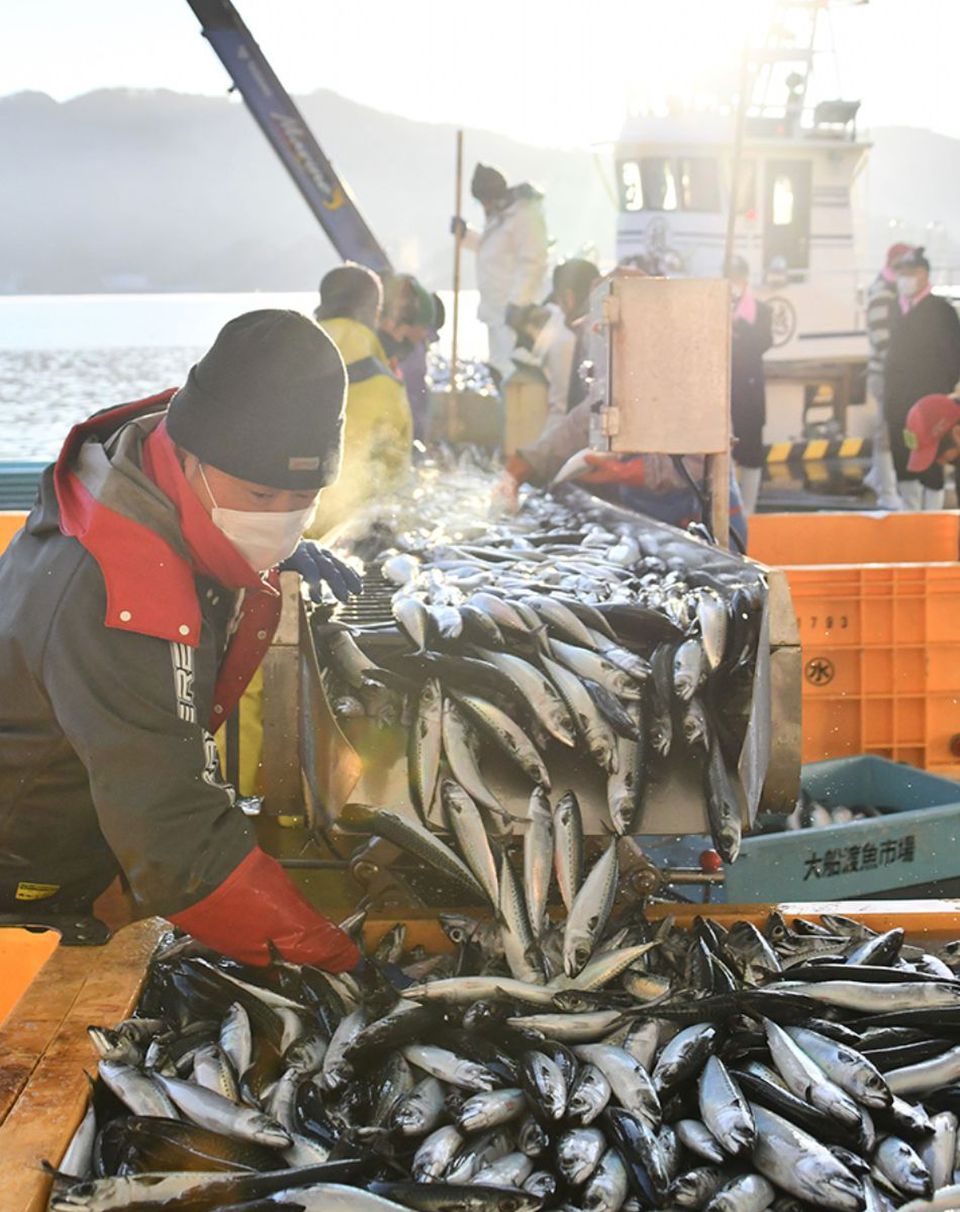
Fishermen unloading mackerel at a fishing port in Ofunato, Iwate Prefecture
TAKAHASHI Daiju has devoted himself to the revitalization of the Tohoku food industry throughout the intervening years since the earthquake. “Science can tell us if something is safe or not, but only humans can relay a sense of safety,” he says. “Scientific guarantees of safety are essential, but guarantees won’t get consumers to actually eat the food. It was only after producers tirelessly spread the word about how delicious Tohoku products are, and how much care goes into their creation, that we were able to win back consumers’ trust. These producers are no longer victims of disaster. They are true heroes in the way they faced down the situation with such great determination.”
In June 2011, three months after the earthquake, Takahashi took part in the founding of “Eat, and Energize the East”—a group of like-minded individuals determined to save the food industry of eastern Japan, and became bureau chief. He resigned from his job at a major consulting firm later the same year. The group established a platform to link food producers of the region with retailers all over Japan, and in the first five years, succeeded in generating sales amounting to JPY 15 billion (USD 136 million). Takahashi also focused on the creation of regional brands. “Ça va?”—a pun on the word saba (Japanese for mackerel)—is one such example: canned mackerel with a stylish package design. “Ça va?” became a hit product and more than 10 million cans have been produced to date.
But Takahashi thinks the greatest success of the past decade lies in the emergence of numerous “heroes” of farm and fishery production. This is the culmination of the group’s strategy to put more focus on the development of expertise. “Eat, and Energize the East” has been organizing training sessions on a regular basis since 2013, in order to improve the business skills of food producers. Enthusiastic participants of the sessions began to link up with each other across the different segments of the food production value chain, such as fishing, seafood processing, and wholesale marketing. Producers also started to connect directly with consumers, and to convey their enthusiasm and personal stories effectively enough to generate a nationwide surge in devotees of Tohoku food products.
Unfortunately, there is still some hesitancy about buying products from Fukushima, which suffered the brunt of the nuclear plant accident, and it may take time for this wariness to dissipate. Moreover, a basic policy was announced in April 2021 to discharge ALPS-treated water— purified of all radioactive content to below regulatory standard, except for tritium—from the Fukushima Daiichi NPS into the sea, following a preparation period of two years. The water will be diluted to keep the concentration of tritium under one-fortieth of the national regulatory standard applied to the country’s nuclear power plants. Although all due precautions for safety will be taken, the discharge may again damage the region’s image. “But we think this can be overcome,” says Takahashi. He reiterates, “After all, while passing on information about safety is necessary, I believe that people play a critical role in imparting a sense of safety.” In March, Takahashi and colleagues invited French chefs based in Tokyo to Fukushima for a tour of production venues. They responded favorably to the tour and showed particular interest in sagohachi, a pickling sauce made with fermented rice. Some of them even devised new recipes for dishes and sweets making use of fermented marinade made with koji, rice and salt.
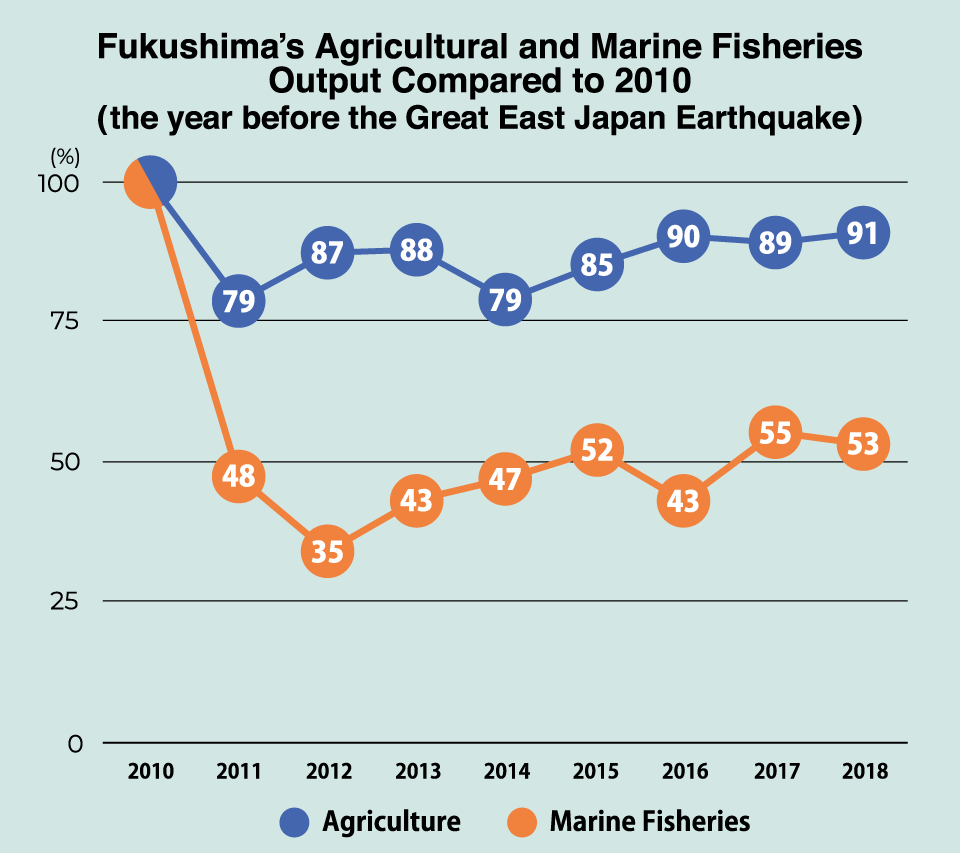
As hesitancy still remains over consuming Fukushima’s agricultural and fishery products, the recovery of the region is some distance away.
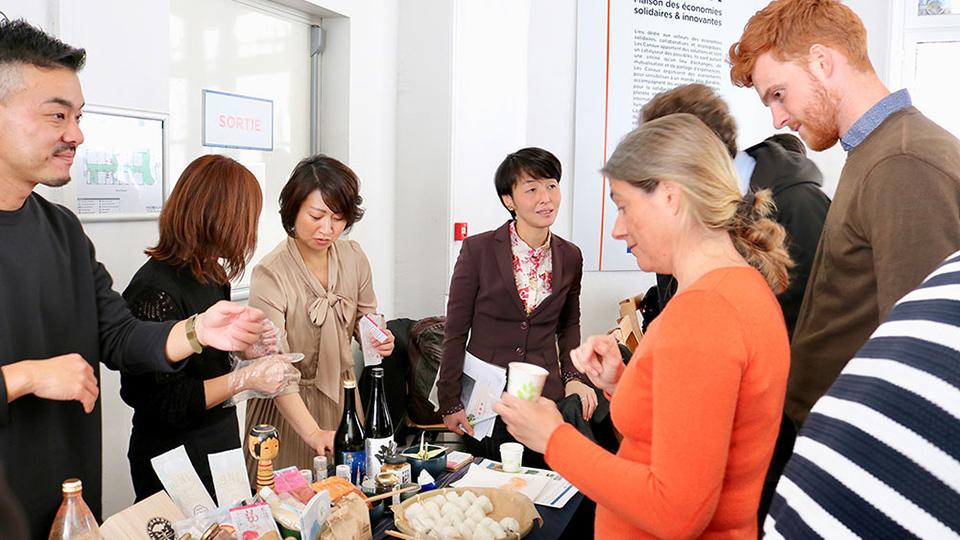
“Eat, and Energize the East” is making efforts to open up markets overseas. Here, prospective business partners are offered a taste of Tohoku at an event in Paris. (Photo from 2019)
In April, Takahashi moved to Namie-town, Fukushima Prefecture situated in close proximity to the Fukushima Daiichi NPS; the town office is about 8 km from the power station. The entire town had to evacuate after the nuclear accident, and although people are now allowed to live in part of the town, only one-tenth of the former residents have actually returned. This may sound like grounds for pessimism, but Takahashi says he has some interesting ideas for the town as it renews itself from point zero. “Fukushima still has many culinary treasures that can be proudly shared with the rest of the world. I hope to bring them into the spotlight and build up a new food industry,” he says. “The future opens its doors only to those who approach it positively,” he adds. Today, and in the years to come, Fukushima’s food producers and their supporters will direct their positive energy toward bringing the culinary delights of the prefecture to the rest of the world.






























